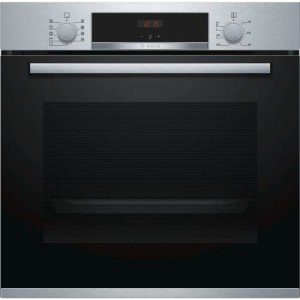The Rise of Built-In Ovens: A Seamless Approach to Modern Cooking
In modern kitchen areas, where style aesthetics mix effortlessly with performance, one device stands out as a true video game changer: the built-in oven. As house owners and chefs alike continue to look for innovative solutions that boost their cooking experience, built-in ovens have actually become progressively popular. This post checks out the benefits, factors to consider, and trends surrounding built-in ovens, highlighting why they are a necessary function in modern cooking areas.
What is a Built-In Oven?
A built-in oven is a kitchen home appliance created to be integrated into the cabinets of a cooking area instead of standing alone. Unlike traditional freestanding ovens, which can be moved and positioned anywhere, built-in ovens come in various styles and sizes to fit specifically within designated areas. Available in single or double configurations, these ovens provide a streamlined look that matches modern kitchen area designs.
Advantages of Built-In Ovens
1. Space-Saving Design
Among the most appealing benefits of built-in ovens is their space-saving style. By incorporating the oven into kitchen cabinetry, you can maximize valuable counter and floor space. This is particularly useful in smaller kitchens, where optimizing room is vital. Built-in ovens can be installed at eye level, making them more accessible and lowering the need to bend down.
2. Aesthetic Appeal
Built-in ovens add to a sleek and cohesive cooking area design. Readily available in various surfaces-- such as stainless-steel, black, white, and custom-made cabinetry-- they can mix effortlessly into the general decoration. fitted ovens and raises the area, creating a modern-day and sophisticated environment.
3. Boosted Functionality
Numerous built-in ovens come equipped with innovative cooking technologies, such as convection cooking, steam ovens, and clever features. These enhancements permit flexible cooking alternatives, making it easier to achieve professional-level outcomes in the house. Smart built-in ovens can even connect to Wi-Fi, allowing users to control the oven from another location, receive notifications, and gain access to a range of cooking programs and dishes.
4. Improved Ventilation
Because built-in ovens can be integrated with kitchen area hoods and ventilation systems, they can assist maintain much better air quality and reduce cooking smells. This is specifically significant for those who like to cook with aromatic spices and ingredients, as a reliable ventilation system can keep the kitchen comfortable and inviting.

5. Modification Options
Built-in ovens offer a wide variety of modification options to fit specific cooking styles and requirements. From professional-grade devices with multiple cooking modes to compact styles for smaller kitchens, property owners can pick the oven that fits their particular requirements. Lots of manufacturers also provide customizable front panels, enabling you to match the oven's appearance to your cabinets for a really merged look.
Factors to consider When Choosing a Built-In Oven
While built-in ovens have many benefits, there are essential factors to consider to bear in mind before buying:
1. Price
Built-in ovens generally include a greater price tag than their freestanding equivalents due to their style and setup requirements. It's essential to element in both the cost of the oven and any additional expenditures connected to kitchen cabinetry modifications or setup.
2. Installation Requirements
Setting up a built-in oven typically needs expert support, specifically if you need to customize existing cabinetry. Ensure that you consider any costs associated with setup, consisting of labor and possible cabinets adjustments.
3. Size and Dimensions
Before purchasing a built-in oven, determine the designated space properly to ensure an appropriate fit. Built-in ovens can be found in various sizes and setups, so choosing one that lines up with your needs and kitchen area design is vital.
4. fitted ovens and Usage
Consider your cooking habits and requires when selecting a built-in oven. If you regularly host large events, a double oven may be more advantageous. On the other hand, if you have a compact kitchen area, a single-wall oven may be enough.
Patterns in Built-In Ovens
The cooking area appliance market is continually developing, and built-in ovens are not exempt from emerging patterns. Some present patterns include:
Smart Technology Integration: With the increase of clever home innovation, built-in ovens now frequently include connectivity options. This permits users to monitor cooking development and adjust settings by means of mobile apps.
Energy Efficiency: As sustainability becomes a top priority, lots of makers are buying energy-efficient built-in ovens that minimize energy usage while maintaining efficiency.
Multi-functional Designs: Built-in ovens now offer features such as air frying, slow cooking, and steaming, supplying flexibility that meets a large range of cooking techniques.
Conclusion
Built-in ovens certainly represent a best mix of style, function, and convenience in today's kitchen areas. As more house owners select this modern service, the focus moves to producing a cooking space that is as aesthetically pleasing as it is useful. Whether you are developing a new home or renovating your kitchen, thinking about a built-in oven could elevate your cooking experience and change your kitchen into a stylish and practical sanctuary. With a variety of choices offered and ongoing developments in innovation, built-in ovens stay a standout option for both beginner cooks and culinary enthusiasts alike.
